
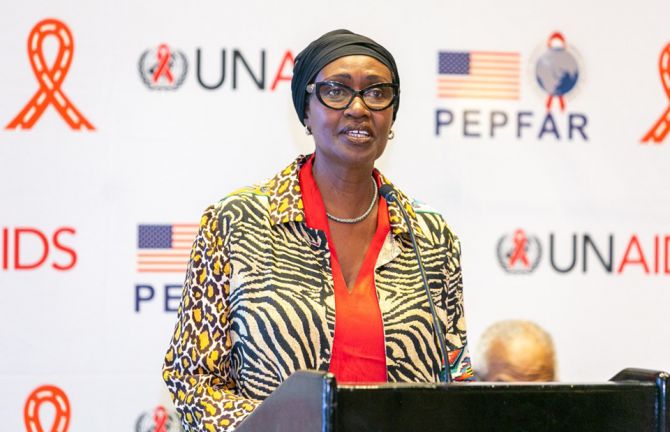
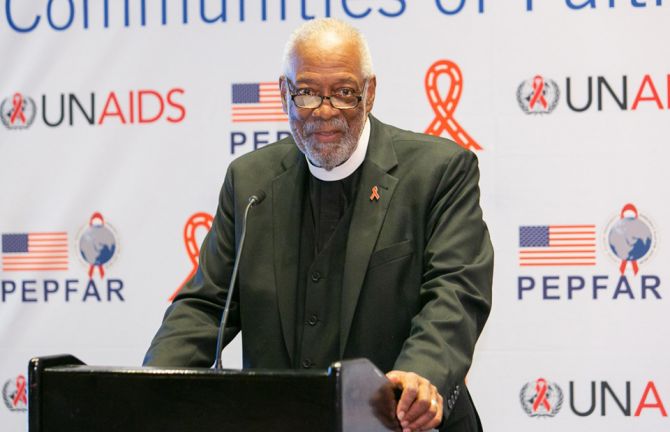
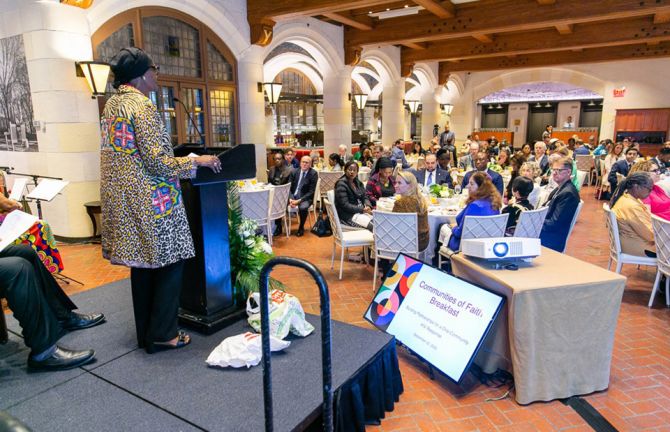
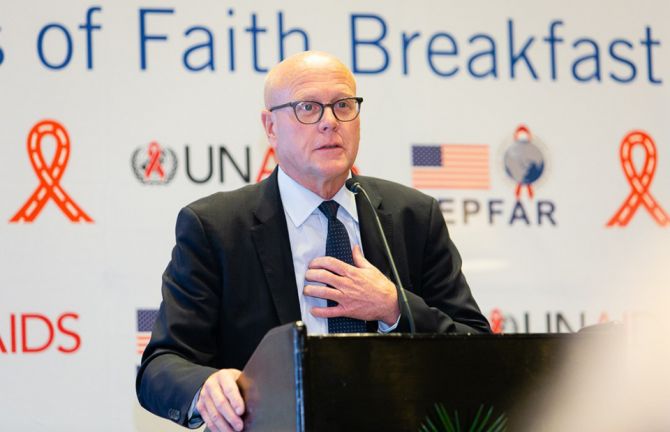
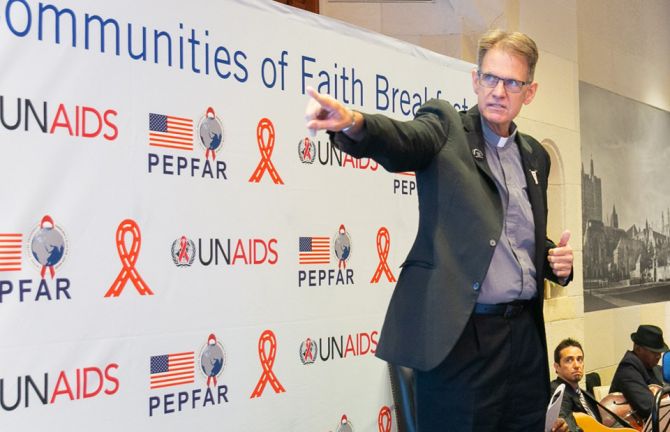
Press Release
Communities of faith unite with health leaders to reach all children affected by HIV
23 September 2022 23 September 2022NEW YORK/GENEVA, 23 September 2022— Only half (52%) of the 1.7 million children living with HIV around the world had access to life-saving treatment in 2021, compared to 76% of adults. A recent report by UNAIDS, In Danger showed that every six minutes a child under the age of 15 died of AIDS last year. Too often, children’s voices are not being heard and their needs are not being met. As a result, the gap in progress between adults and children is widening.
Determined that reaching children affected by HIV be made a top global priority, faith communities and health leaders came together at a high-profile event held on the sidelines of the United Nations General Assembly in New York to mobilize action and find effective ways forward. The event highlighted innovative models developed with faith-based organisations that have substantially improved outcomes for children, showing that more can be done.
“We need people of faith working together with the same meaning, the same purpose and with connectedness,” said Father Richard Bauer. “We have to treat the whole person—the biomedical and the psychosocial aspects.”
Loyce Maturu was 10 years old when she lost her mother and her brother to AIDS. When she was 12, she became ill and was taken to the clinic. She wasn’t told that she was living with HIV, and was instead just given pills to take. It was only after she stopped taking her medicine properly because she felt well that she was finally informed that she was living with HIV. She has grown up to be a champion for better care for children affected by HIV.
“We need more than medicines if children are to take their treatment, survive and thrive,” said Ms Maturu, addressing the leaders at the event. “We need better health and psychosocial support to help us understand our condition and treatment, to learn how to grow with HIV to feel confident, valued and loved and to be able to achieve our hopes and dreams.”
“Collectively we have been failing children and the point of coming together is to turn that around,” said Chip Lyons, President and CEO of the Elizabeth Glaser Pediatric AIDS Foundation. “Leaders who speak about children have great power. Never miss an opportunity to speak about children.”
Faith-based organizations have provided a significant proportion of HIV-related health care since the beginning of the AIDS epidemic, particularly in resource limited settings. They have strong links with communities and are vital partners in work to shift opinions, reduce stigma, provide data-led evidence and reach the most marginalized in society who are often the most in need of lifesaving health services.
“Communities of faith are the megaphone of trust in the community,” said Ambassador John Nkengasong, U.S. Global AIDS Coordinator and Special Representative for Health Diplomacy. “Because of this trust we can see increased uptake of pediatric treatment by more than 20% in rural settings – we rely on you and the trust people have in you. We are committed to work with all of you to address the gaps and barriers that are creating the very alarming numbers we are seeing in children.”
Over 70% of the 1.7 million children living with HIV are in just 10 African countries. That makes ending HIV in children an achievable goal. If those ten countries act, almost three-quarters of the challenge could be overcome.
Stigma, discrimination, punitive laws and policies, violence and entrenched societal and gender inequalities are hindering access to care for women, adolescents and children. Faith communities can be extremely effective at breaking down stigma and calling for changes in laws and policies to ensure all people, including children, are safe and protected as they access HIV services.
“It is your caring and compassion that changes lives and mindsets. In every community, in every country, you are trusted. Respected. Listened to in ways others are not. Your ability to influence how people understand and react to HIV is unparalleled. You are crucial – central – to this work,” said Winnie Byanyima, Executive Director of UNAIDS.
One of the biggest challenges is rapidly finding children living with HIV who were not diagnosed at birth or during breastfeeding and linking them to treatment. For younger children, too, it is concerning that only 63% of HIV-exposed infants in 2021 were tested by two months of age. Without treatment, 50% of infants with HIV will die by two years of age.
New ambitious targets for diagnosing children and linking them to care have been set for 2023 and 2025, and a new Global Alliance to End AIDS Among Children has just been launched, which aims to end AIDS in children by 2030.
In all of these efforts, faith communities play an invaluable role in helping governments, international organizations, communities of people living with HIV, service providers and many others to achieve the new targets and end AIDS by 2030. This includes especially those who face the greatest challenges in advocating for their needs —children.
UNAIDS
The Joint United Nations Programme on HIV/AIDS (UNAIDS) leads and inspires the world to achieve its shared vision of zero new HIV infections, zero discrimination and zero AIDS-related deaths. UNAIDS unites the efforts of 11 UN organizations—UNHCR, UNICEF, WFP, UNDP, UNFPA, UNODC, UN Women, ILO, UNESCO, WHO and the World Bank—and works closely with global and national partners towards ending the AIDS epidemic by 2030 as part of the Sustainable Development Goals. Learn more at unaids.org and connect with us on Facebook, Twitter, Instagram and YouTube.
